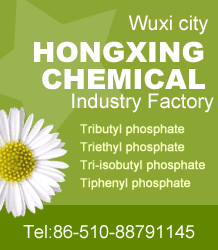Propiconazole
Inquiry
| Post Date: | Jul 31,2015 |
| Expiry Date: | Jan 27,2016 |
| Detailed Description: |
Cas No. :60207-90-1
Payment Method: L/C,T/T Propiconazole is a triazole fungicide used agriculturally on grasses grown for seed, mushrooms, corn, wild rice, peanuts, almonds, sorghum, oats, pecans, apricots, peaches, nectarines, plums and prunes.Chemistry: IUPAC Name: 1-[[2-(2,4-dichlorophenyl)-4-propyl-1,3-dioxolan-2-yl]methyl]-1,2,4-triazole Empirical Formula: C15H17Cl2N3O2 Molecular Weight: 342.2204g/mol Structure of Propiconazole (CAS NO.60207-90-1): Index of Refraction: 1.623 Molar Refractivity: 86.41 cm3 Molar Volume: 244.8 cm3 Polarizability: 34.25×10-24cm3 Surface Tension: 48.4 dyne/cm Density: 1.39 g/cm3 Flash Point: 244.1 °C Enthalpy of Vaporization: 74.44 kJ/mol Boiling Point: 479.9 °C at 760 mmHg Vapour Pressure: 2.26E-09 mmHg at 25°C Uses: Propiconazole is a triazole fungicide used agriculturally on grasses grown for seed, mushrooms, corn, wild rice, peanuts, almonds, sorghum, etc. Propiconazole can be absorbed by the roots, stems and leaves, and plants conduct it upward quickly. Mode of action: Systemic foliar fungicide with protective and curative action, with translocation acropetally in the xylem. Toxicity Data: Organism Test Type Route Reported Dose (Normalized Dose) rat LC50 inhalation 1264mg/m3/4H (1264mg/m3) rat LD50 oral 1517mg/kg (1517mg/kg) rat LD50 skin > 4gm/kg (4000mg/kg) ENVIRONMENTAL FATE: Animals: After oral administration to the rat, propiconazole is rapidly absorbed and also rapidly and almost completely eliminated with urine and faeces. Residues in tissues were generally low and there was no evidence for accumulation or retention of propiconazole or its metabolites. The major sites of enzymic attack are the propyl side-chain and the cleavage of the dioxolane ring, together with some attack at the 2,4-dichlorophenyl and 1,2,4-triazole rings. In the mouse, the major metabolic pathway is via cleavage of the dioxolane ring (R. Bissig & W. Muecke, Br. Crop Prot. Conf. - Pests Dis. , 1988, 2 , 675-680). Plants: Degradation proceeds through hydroxylation of the n -propyl side-chain and deketalisation of the dioxolan ring. After cleavage of triazole, triazole-alanine is formed as the main metabolite. Metabolites are conjugated mostly as glucosides. For details of metabolites of propiconazole in wheat, rice and vines, see B. Donzel et al., IUPAC 7th Int. Congr. Pestic. Chem. , 1990, 2 , 160. Soil/Environment: DT 50 in aerobic soils (25 oC) 40-70 d. The main degradation pathways are hydroxylation of the propyl side-chain and the dioxolane ring, and finally formation of 1,2,4-triazole. K oc (ads) 950 ml/g, immobile in soil. |
| CAS Registry Number: | 60207-90-1 |
| Synonyms: | ;1-[[2-(2,4-dichlorophenyl)-4-propyl-1,3-dioxolan-2-yl]methyl]-1H-1,2,4-triazole;1-(2-(2',4'-Dichlorophenyl)-4-propyl-1,3-dioxolan-2-yl-methyl)-1H-1,2,4-triazole;1,2,4-Triazole, 1-((2-(2,4-dichlorophenyl)-4-propyl-1,3-dioxolan-2-yl)methyl)-;Banner;CGA-64250;Desmel;Orbit;Proconazole;Propiconazole Tilt;Wocosin;Propiconazole E.C.;(1-[2-(2,4-dichlorophenyl)-4-propyl-1,3-dioxolan-2-ylmethyl]-1H-1,2,4-triazole;1-{[2-(2,4-dichlorophenyl)-4-propyl-1,3-dioxolan-2-yl]methyl}-1H-1,2,4-triazole; |
| Molecular Formula: | C15H17Cl2N3O2 |
| Molecular Weight: | 342.2204 |
| Molecular Structure: | 
|
| Company: | Ningbo Sunking Biotech Co., Ltd [ China ] |
| Contact: | Xia |
| Tel: | 86-574-86300528 |
| Fax: | 86-574-86300538 |
| Email: | sunkingchem@263.net |
-
Disclaimer statement:The information and data included above have been realized by the enterprises and compiled by the staff, and are subject to change without notice to you. The Chemnet makes no warranties or representations whatsoever regarding the facticity, accuracy and validity of such information and data. In order to ensure your interest, we suggest you chose the products posted by our gold suppliers or VIP members.


